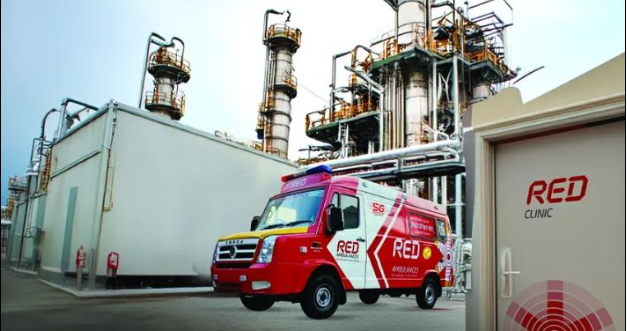In life-threatening emergencies, immediate medical intervention can significantly impact patient outcomes. The integration of telemedicine with 24-hour ambulance services is revolutionizing emergency healthcare by enabling real-time consultations, remote monitoring, and enhanced decision-making during patient transport. In India, where rapid access to medical services can be challenging in certain areas, this fusion of technology and mobility is proving to be a game-changer for critical care.
The Role of Telemedicine in Emergency Ambulance Services
Telemedicine bridges the gap between emergency responders and hospital-based specialists by providing remote access to expert medical guidance. This integration ensures that paramedics in ambulances can:
- Consult specialists in real time for better diagnosis and treatment decisions.
- Transmit vital signs and patient data to hospitals before arrival.
- Receive step-by-step instructions on administering life-saving procedures.
With 24-hour ambulance services now leveraging telemedicine, patients receive quicker and more precise care, even before reaching a medical facility.
Benefits of Integrating Telemedicine with 24-Hour Ambulance Services
1. Faster and More Accurate Emergency Response
When an ambulance is dispatched, paramedics often have limited information about the patient’s condition. With telemedicine, they can connect with specialists who can guide them through the necessary procedures, ensuring the best possible care from the moment the ambulance arrives.
2. Enhanced Rural Healthcare Access
In many parts of India, accessing specialized medical care can be difficult due to geographical constraints. A 24-hour ambulance service equipped with telemedicine can provide immediate remote consultations, reducing the need for long-distance patient transfers and ensuring timely interventions.
3. Continuous Monitoring During Transport
A critical patient’s condition can change rapidly while en route to a hospital. Telemedicine enables continuous monitoring, with vital signs being transmitted in real time. Doctors can make necessary adjustments to treatment protocols while the patient is still in transit.
4. Optimized Hospital Preparedness
By sharing real-time patient data with hospitals, medical teams can prepare for incoming emergencies more efficiently. This minimizes wait times upon arrival and ensures that the right specialists and equipment are ready for immediate treatment.
5. Improved Survival Rates
With immediate access to remote consultations and real-time decision-making, the chances of survival and recovery improve significantly. This is especially critical for stroke, heart attack, and trauma patients who require urgent intervention.
How RED.Health is Leading the Change in India
RED.Health is at the forefront of integrating telemedicine with 24-hour ambulance services in India. By combining advanced telehealth solutions with a reliable network of ambulances, RED.Health ensures that patients receive expert medical attention even before reaching a hospital. Their technology-driven approach enhances response times, reduces mortality rates, and makes emergency medical care more accessible across urban and rural areas.
The Future of Telemedicine-Enabled Ambulance Services
As technology continues to evolve, telemedicine in ambulance services is expected to expand further. Future advancements may include:
- AI-powered diagnostics for quicker assessments.
- Wearable health monitors for continuous patient tracking.
- Automated triage systems to prioritize emergency cases more efficiently.
With these innovations, the best ambulance services will become even more effective in delivering life-saving care on demand.
Conclusion
The integration of telemedicine with 24-hour ambulance services is transforming emergency healthcare in India. By providing real-time consultations, enhanced monitoring, and seamless hospital coordination, this advancement is improving critical care outcomes. With pioneers like RED.Health leading the way, the future of ambulance services in India is set to become more efficient, accessible, and lifesaving.

